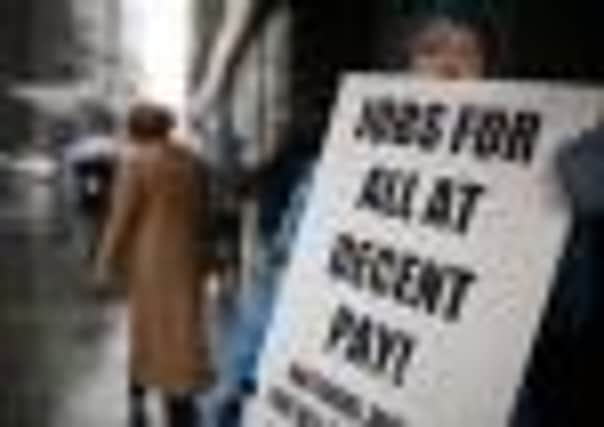Unexpectedly weak US job figures leave door open to new QE round


The rate of unemployment in the world’s biggest economy fell to a three-year low of 8.2 per cent, though this is mainly because some people gave up the search for work.
The US department of labour said employers added 120,000 jobs last month – the smallest rise since October and well below Wall Street estimates.
Advertisement
Hide AdAdvertisement
Hide AdThe disappointing data pushed the S&P 500 stock index futures down more than 1 per cent. The New York Stock Exchange was closed for the Good Friday holiday. US Treasury debt prices turned sharply higher, while the dollar turned lower against the euro on the likelihood of more quantitative easing (QE) by the Federal Reserve.
White House economic adviser Gene Sperling said the fact that employers were adding tens of thousands of jobs showed that the economy was making progress but still has a long way to go. Jobs are a key issue in President Barack Obama’s re-election campaign.
However, Mitt Romney, his likely Republican opponent in November’s election, called the report “very troubling”.
The weakness in hiring last month was concentrated in the vast private services sector, which added 90,000 jobs after a rise of 204,000 in February. But retail employment dropped 33,800 after falling 28,600 the previous month.
Construction hiring fell by 7,000, the second straight monthly decline. However, manufacturing enjoyed another month of strong job gains, with factories adding 37,000 positions, helped by carmakers trying to meet pent-up demand for vehicles.
The weak employment growth is likely to have reflected the fading boost from unseasonably mild winter weather and brings the jobs market more in line with a broader slowdown in the US economy.
Michael Gapen, a senior economist at Barclays in New York, said: “Given that the report reflects only one month of data and some of the underlying cyclical sectors registered payroll gains, we do not view it as conclusively signalling a shift to a lower trend rate of employment growth.
“The soft employment numbers certainly leave the door open for further accommodation [with QE] and may shift the decision point to the June meeting as the Fed continues to monitor the incoming data.”
Advertisement
Hide AdAdvertisement
Hide AdJason Conibear of foreign exchange specialist Cambridge Mercantile was more upbeat. He said: “The numbers are down sharply on February, but a downer they’re not. We can’t expect miracles, the main thing is that there’s still forward momentum. The US economy is by no means tanking here.
“The March numbers signify a stabilisation in the jobs curve, not the beginning of a slump. Rumours of renewed QE will, however, re-emerge on the back of this data.”
The US economy is believed to have slowed in the first quarter to around a 2 per cent annual growth rate from the 3 per cent seen in the October-December period.
Conibear added: “Irrespective of the more modest [jobs] figures, the contrast between the US and the euro area becomes ever more pronounced. They’re moving in altogether different directions.”